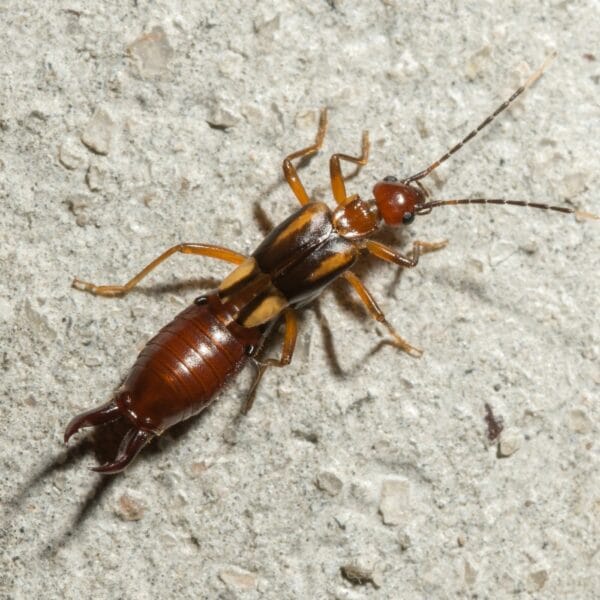While more of a nuisance than a threat, earwigs are still an unwelcome home invader. Earwigs are typically found outdoors, under rocks or around flower beds. Their characteristic, menacing-looking pincers are only used for catching prey and for defense against other predators.
Size: from 1/4 – 1 in.
Color: Brown to brown-black
Body Structure: Head with antennae, thorax, and abdomen with pincers on the end
Characteristics: Females will deposit eggs in a shallow burrow, usually around flower beds or other damp areas, in the spring. Females will tend to their eggs and will continue to feed nymphs, which resemble smaller versions of adults, after hatching. Nymphs leave the burrow once they are capable of searching for food.
Habitat/Behavior: Earwigs tend to hide in cracks and damp areas and largely are active at night. They are, however, drawn to bright light. While they typically reside outdoors, feeding on other insects and plant materials, they occasionally will make their way indoors if food is scarce or if weather turns cold. When indoors, earwigs will make themselves at home wherever there are damp, dark conditions. While not known to bite, they do release a foul-smelling scent.
Commonly Active: Spring to fall, but can be active year-round indoors
Prevention/Treatment: Clearing debris from around your home’s foundation as well as checking downspouts and drains to make sure water is not pooling near your home will help keep earwigs away. Also, if you have accent or safety lighting around your home, consider installing insect-repelling bug lights or even relocating the lights so that they are away from the structure. Although they commonly will gravitate to bath and kitchen areas indoors, they can infest many areas of a home, making them extremely difficult to treat. For this reason, it is best to contract a pest control professional to administer targeted treatments to eliminate the infestation.

